Search Results for Tag: UN talks
Arctic investment: still a hot prospect?
As I mentioned in the last post, I talked to various people about the current state of interest in the Arctic, in connection with the ArcticNet conference on “Arctic Change” in Ottawa last week. I would like to share some of the insights I gained with you here on the Ice Blog. With a lot of concerned people still suffering from a kind of mental hangover after the two weeks of UN climate negotiations in Lima, let me also direct you to a commentary I wrote for DW: Lima: a disappointment, but not a surprise. If you expected any action at the meeting which might help stop the Arctic warming, you will have been highly disappointed. If, like me, you think the transition to renewables and emissions reductions we need have to happen outside of and alongside that process, all day and every day, your expectations will not have been so high.
But back to the Arctic itself. With Canada coming to the end of its spell at the helm of the Arctic Council and preparing to hand over the rotating presidency to the USA at the end of the year, the annual conference organized by the research network ArcticNet was bound to attract a lot of interest. More than 1200 leading international Arctic researchers, indigenous leaders, policy makers, NGOs and business people attended the Ottawa gathering to discuss the pressing issues facing the warming Arctic.
Hugues Lantuit from Germany’s Alfred Wegener Institute is a member of the steering committee. He’s an expert on permafrost and coastal erosion. He told me in an interview that the region had to prepare for greater impacts ,with the latest IPCC report projecting the Arctic would continue to warm at a rate faster than any place on earth. While the retreat of sea ice allows easier access for shipping and more scope for commercial activities, Lantuit is concerned about the thawing of permafrost, a key topic at the Ottawa gathering:
“An extensive part of the circumpolar north is covered with permafrost, and it’s currently warming at a fast pace. A lot of cities are built on permafrost, and the layer that is thawing in the summer is expanding and getting deeper and deeper, which threatens infrastructure.”

Scientists at measuring stations like the one I viisted at Zackenberg, Greenland, measure the amount of greenhouse gases emitted by melting permafrost. (I.Quaile)
Northern communities worried
Residents of northern communities are concerned about the impact of melting permafrost on railways, landing strips and buildings. Lantuit and his colleagues have created an integrated data base for permafrost temperature, with support from the EU. At the Ottawa meeting, he and his colleagues worked on identifying priorities for research, taking into account the needs of communities and stakeholders in the Arctic.
Another key issue on the Ottawa agenda was coastal erosion. Sea ice acts as a protective barrier to the coast, preventing waves from battering the shore and speeding up the thaw of permafrost. With decreasing sea ice in the summer, scientists expect more storms will impact on the coasts of the Arctic. “In some locations, especially in Alaska, we see much greater erosion than there was before”, says Lantuit. This creates a lot of issues: “There is oil and gas infrastructure on the coast, villages, people, also freshwater habitats for migrating caribou, so the coast has a tremendous social and ecological value in the Arctic, and coastal erosion is obviously a threat to settlements and to the features of this social and economical presence in the Arctic.”
Bad news for furred and feathered friends
Amongst the participants at the conference was George Divoky, an ornithologist who has spent every summer of the past 45 years on Cooper Island, off the coast of Barrow, in Arctic Alaska. Divoky monitors a colony of black guillemots that nest on the island in summer. His bird-watching project turned into a climate change observation project as he witnessed major changes in the last four decades:
“Warming first aided the guillemots (1970s and 1980) as the summer snow-free period increased. The size of the breeding colony increased during the initial stages of warming. Continued warming (1990s to present) caused the sea ice to rapidly retreat in July and August when guillemots are feeding nestlings, and the loss of ice reduced the amount and quality of prey resulting in widespread starvation of nestlings.”
The 2014 breeding season on Cooper Island had the lowest number of breeding pairs of Black Guillemots on the island in the last 20 years, Divoky says. Reduced sea ice is increasingly forcing polar bears to seek refuge on the island, eating large numbers of nestlings. Polar bears were rare visitors to the island until 2002.
The Arctic and the global climate
Divoky went to Ottawa to fit his research and experience into the wider context of climate impacts in the Arctic. Researching climate change and its effects are important but of little practical use if the research does not inform government officials and result in policies that address the causes of climate change, Divoky argues.
I asked Hugues Lantuit whether he thought the UN climate conference in Peru could achieve anything that would halt the warming of the Arctic. He said reducing emissions and reducing temperature were the only way to reduce the thaw of permafrost. But he is quite clear about the fact that there is no mitigation strategy in terms of permafrost directly. “You would have to put a blanket over the entire permafrost in the northern hemisphere. This is not possible.”
At the same time, he stressed the key role of the Arctic with regard to the whole world climate: “Permafrost contains a lot of what we call organic carbon, and that is stored in the upper part. And if that warms, the carbon is made available to microorganisms that convert it back to carbon dioxide and methane. And we estimate right now that there is twice as much organic carbon in permafrost as there is in the atmosphere”.
So far, the international community has not been able to take measures to break that vicious circle.
What happened to the Arctic gold rush?
Communities who live and companies that work in the Arctic have to focus on adaptation to the rapid change, says Lantuit. In his eyes, economic activity is increasing, posing new challenges for infrastructure and the environment.
Malte Humpert, the Executive Director of the Arctic Institute, a non-profit think tank based in Washington DC has a different view on the matter. He says while attendance at Arctic conferences and interest in the Arctic is still high, commercial activity has actually been cooling off. “We are seeing a slow-down of investment. Up to this point there has been a lot of studying, a lot of interest being voiced, with representatives from China or South Korea, Japan, Singapore or other actors, arriving at conferences, speaking about grand plans. But up to this point a lot of the talk has been just that.” A lot of activity has been put on hold, says Humpert. He says the “gold rush mentality we saw a few years ago” has weakened. “There was a lot of talk about Arctic shipping initially, then we had oil and gas activity in 2012, north of Alaska, then we had the discussion about minerals in Greenland. The question is now, with the oil price being down below 70$ a barrel, some political uncertainties over the Ukraine, involving the EU and Russia, how will that affect Arctic development?”
Humpert stresses the Arctic does not exist in a vacuum, but has to be seen within the global context. Sanctions on Russia because of the Ukraine crisis have created economic problems for Moscow and limited access to technology it might need for its Arctic activities. “Maybe Arctic development has been oversold and overplayed and will be more of a niche operators’ investment. One could definitely question if there will be this global push into the Arctic.”
Arctic development on ice
Humpert is skeptical that any major development will take place before 2030. He says developing the infrastructure in terms of ports and communications in the remote Arctic region would require billions of dollars of investment, and would have to be a very long-term proposition. It will also depend to a large extent on exactly how climate change affects ice conditions in the Arctic. Climate change can make the climatic conditions in the Arctic more variable. This means that for a temporary period, there might even be more ice, which would block transport routes.
The Arctic Institute says there has actually been a slow down this year in terms of navigation on the northern sea route (NSR) in particular: “The season just closed about a week ago. Last year we had 1.35 million tonnes of cargo being transported along the NSR, this year we had less than 700,000 tonnes, so an almost 50% decrease, just because there was more ice in the way”, says Humpert.
Whether slower development is good news or bad depends on your perspective. The lull in Arctic activity could pre-empt environmental degradation or destruction, says Humpert, and leave scope to consider development of the Arctic in what he calls a 21st century way. Instead of “old-school” thinking about extracting minerals, oil and gas and increasing shipping, there could be a focus on bringing modern, high-speed communications, fiber optics and thinking about renewables, such as wave energy. This would benefit the small populations in the Arctic, the expert argues.
But from the viewpoint of a country like Russia, he adds, where 40 percent of your exports are generated above the Arctic circle, in terms of hydrocarbon resources, the slowdown in Arctic development because of the drop in oil prices and political tensions over Ukraine is very worrying.
So while these developments seem to have brought the Arctic a breathing space, ultimately, the commercialization of the region could be just a matter of time. Ottawa conference organizer Lantuit argues that there has always been activity in the high North. The priority now, he says, must be to ensure international cooperation and additional investment in protecting the environment and maintaining safety in a region where rapid change seems to have become the status quo.
Climate action from Peru to Paris
Today is the first of December. It’s the start of the meteorological winter in the northern hemisphere, towards the end of what looks set to be the warmest year since records began. It is also the day when the annual UN climate conference gets underway in Lima, Peru. Negotiators from around the world will try to hammer out the details of a new World Climate Agreement to halt global warming by reducing CO2 emissions. For our polar ice, that agreement can’t come fast enough.
After five years of frustration following the failure of the Copenhagen climate summit in 2009, 2014 may well go down in history as the year when climate change made a comeback onto the international agenda. Although there is still one year to go until the key Paris meeting which is scheduled to come up with a new World Climate Agreement to replace the Kyoto Protocol, 2014 has seen several milestones on the path to a low-carbon future.
In September, the UN Secretary General Ban Ki Moon gave the issue top priority, by holding his own special climate summit in New York. It was accompanied by marches in the USA and other parts of the world, organized by a growing grassroots movement to combat climate change. Meanwhile, the world’s biggest emitters, China and the USA, finally signaled their intention to commit to action on climate change.
No time for delay
The latest report by the Intergovernmental Panel on Climate Change, the IPCC, has left no doubt about the need for urgent action, says Professor Stefan Rahmstorf from Germany’s Potsdam Institute for Climate Impact Research:
“We see that global temperatures have risen by almost one degree centigrade in the last 100 years, we see that global sea level has risen by nearly 20 centimeters in the last 100 years. We see that the mountain glaciers and the Arctic ice cover is in retreat, the continental ice sheets in Greenland and Antarctica are shrinking, losing mass, contributing to sea level rise, we see extreme events on the rise. For example the number of record-breaking hot months has increased five fold as compared to what you get by chance in a stationary climate.”
The international community has agreed, based on the scientific evidence available, that a temperature rise of two degrees is the maximum possible without exposing the world to potentially devastating climate change. That means limiting the greenhouse gas emissions that are warming the planet. But with those emissions still on the rise, that goal is nowhere in sight, says Rahmstorf, and climate change is already having an impact after just under one degree of warming:
“If we don’t stop this process, we will go well beyond two degrees centigrade, and we will leave the range we are familiar with throughout human history. We will be way outside that into uncharted and I think very dangerous waters.”
Peru prepares the way for Paris
Experts see the world on track for a temperature rise of at least four degrees, unless emissions are reduced substantially in the very near future. The latest figures indicate that to stay within the two degree limit, emissions would have to peak within the next ten years and the world become virtually carbon-neutral in the second half of this century.
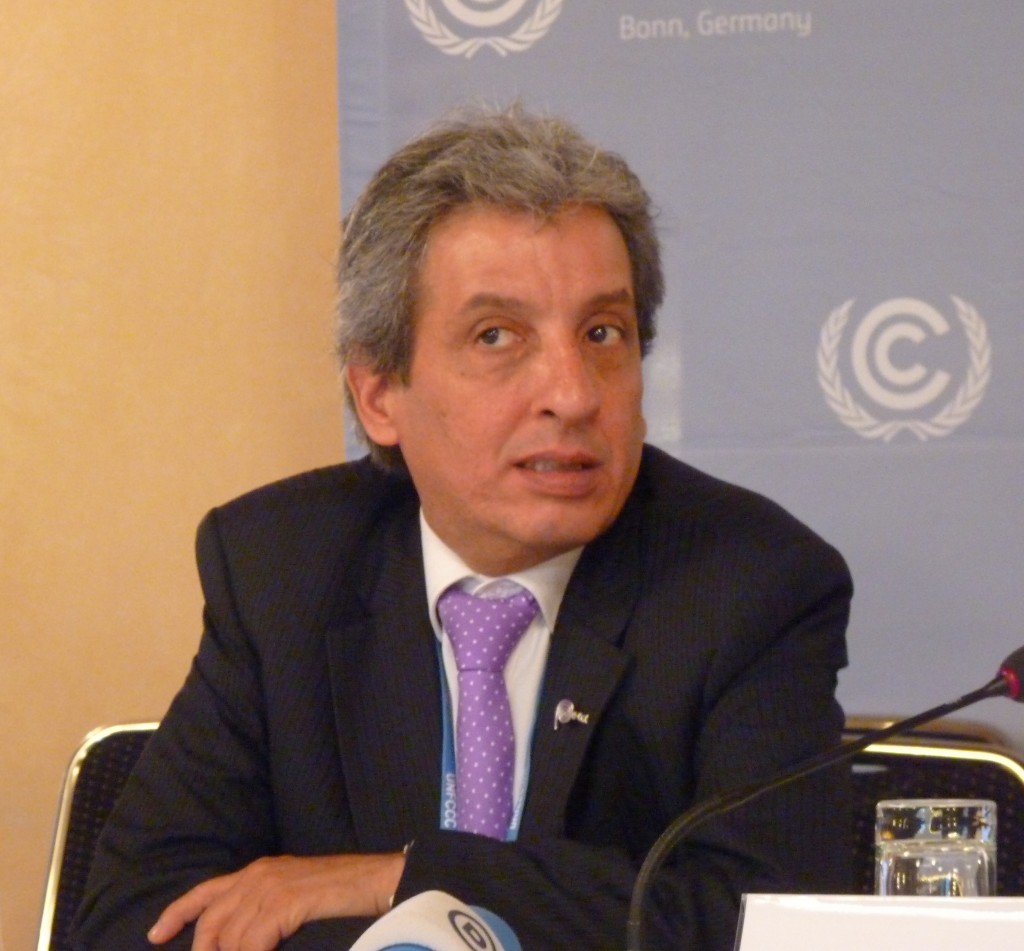
Peru’s Environment Minister and COP 20 President Manuel Pulgar-Vidal told me in Bonn this summer he was optimistic about the Lima meeting. (Pic: Quaile)
That is why Peru, like every climate conference, is important, says UN climate chief Christiana Figueres. She stresses that climate protection is an ongoing process. Countries have until March 2015 to put their planned contributions on the table. The EU made a start by announcing its targets last month. The USA and China went on to give encouraging signals:
“The fact is that most countries around the world are currently doing their homework and figuring out on a national scale what is financially, politically, economically, technically possible for them to contribute towards the solution,” says Figueres.
But while that homework continues in the countries of the world, the negotiators assembling in Lima will have to make progress on drafting the universal climate agreement, which is scheduled to be agreed in Paris in December 2015 and to come into effect in 2020.
A price on CO2
Ottmar Edenhofer is the chief economist at the Potsdam Climate Institute. He is also co-chair of the IPCC group concerned with ways of tackling climate change. He says the world has only around 20 to 30 years left to solve the emissions problem. He stresses it is not a question of technology. Alternative energy technologies are there to solve the problem. Yet fossil fuels have been enjoying a renaissance, says the climate expert. The key, he says, is to put a price on carbon, making it too expensive to pump CO2 into the atmosphere. The world only have a limited carbon budget. That means we can only put another one thousand gigatonnes of CO2 into the atmosphere to keep temperature rise below the two-degree threshold and avoid the risk of what Edenhofer describes as “very severe climate change impacts”.
“Space to store CO2 in the atmosphere is becoming scarce”, Edenhofer explained to me recently during a visit to Potsdam. “And when things are scarce, you have to put a price on them. That is the only way to show investors, consumers and companies where they should be investing their money.” The window of opportunity is closing, says Edenhofer. If we keep on with business as usual, we will have used up all our carbon budget in two to three decades.
UN climate chief Figueres agrees that putting a price on pollution by CO2 is a very important component of the shift towards a low carbon economy.
“What we have done over the past 150 years is assumed there is no cost to the irresponsible use of the environment, and we have proceeded as though the environment were constantly renewable, where it is not”, Figueres told me in an interview conducted in her office here in Bonn, right next to our Deutsche Welle building. Putting a price tag on CO2 emissions would mean they could be costed in economic decision-making.
Haggling out the details
The negotiators in Lima have their work cut out for them. Countries with large fossil fuel reserves are reluctant to agree to emissions reductions which would destroy their source of revenue. But Edenhofer is optimistic that ultimately all countries will realize that climate change will pay off in the end.
„We have to assume that people will see sense. They will realize that the long-term consequences of business as usual will be irreversible climate change, with all the problems that brings with it”.
The economist says protecting the climate would also bring the kind of short-term benefits politicians are looking for. He cites the change in China’s policies as an example:
“The drastic air pollution in Beijing is already making it less attractive as a business location. And the reason the Chinese government is thinking very seriously about reducing emissions is because it would also be a step towards improving their air quality.”
Funding boost for UN talks
After years of stagnation and frustration, there are signs that progress is being made on climate change. At a key meeting in Berlin this month, countries pledged a total of almost 10 billion dollars to the Green Climate Fund, which was set up to help poorer countries adapt to climate change. This could motivate developing countries and emerging economies to sign up to a new world climate agreement. So far, many of them have been reluctant to limit their own emissions, as the wealthy industrialized states are the ones who have caused the problem by emissions in the past.
Although both the money pledged for adaptation and the emissions cuts proposals currently on the table are still insufficient and things are moving slowly, German scientist Rahmstorf compares the likelihood of a breakthrough to the fall of the Berlin Wall, 25 years ago.
“If you had asked people just a few months before that how likely it was that the wall comes down, nobody would have said it’s going to happen”, says the Potsdam expert and IPCC author. He says these kind of processes in society are hard to predict – and the signs are encouraging.
He cites the “huge success story” of renewable energies and the considerable emissions reductions by the EU countries since 1990 as encouraging signs. This did not hamper economic growth, says Rahmstorf:
“It shows that your can decouple emissions from economic growth and welfare”.
Ultimately, halting climate change is not something which can be achieved solely within the UN negotiations. This year for the first time a pre-conference meeting was held in Peru to involve non-governmental groups in the process. The transition to a climate-saving low-carbon society requires action across the board. But it is the governments of the world who have to enter into binding agreements, and that means plenty of hard work ahead for the negotiators in Peru over the next two weeks.
Listen to my Peru conference preview on Living Planet.
Arctic icon in decline
As I plan my coverage of this year’s annual UN climate conference, this time in Peru, a news item from WWF pops up in my mail box. The organization is concerned that the number of polar bears in the Beaufort See in Alaska and in north-western Canada has dropped by around 40 percent in the last ten years. Now that is a very worrying statistic.
It is based on a study published in the journal Ecological Applications: Polar bear population dynamics in the southern Beaufort Sea during a period of sea ice decline.
In 2004, it seems 1,500 polar bears were counted. The latest count showed just 900. Declining sea ice and a lack of prey seem to be the likeliest causes. Another piece of evidence to justify the decision in 2008 to list polar bears under the US Endangered Species Act.
WWF fears the worrying trend will continue if climate change is not halted. There are only between 20,000 and 25,000 polar bears left in the world. With the average air temperature in the Arctic a good five degrees centigrade higher than it was a hundred years ago, it is hardly surprising that nature is struggling to cope. As the sea ice declines, the bears are losing their habitat. You might also remember the pictures of all those walruses on the beach a few weeks ago. They too, were affected by the decline of the sea ice where they usually rest between dives.
So what can we do to halt the decline in the polar bear population? This brings me back to the forthcoming climate conference in Peru. I am finding it difficult to arouse interest in this year’s meeting. “Paris next year is the important one”, I hear. So does climate action just get put on hold for another 12 months? Tell that to the polar bears. One single conference cannot save the world from the climate catastrophes that could lie ahead if the world does not manage to reduce its emissions drastically in the next few years. UNEP’s “Emissions Gap Report 2014”, just published yesterday, says we have to be carbon-neutral by the 2nd half of this century to keep temperature rise below two degrees centigrade. There is still a huge gap between the pledges made by countries within the UNFCCC framework and what is necessary for that. Emissions would have to peak within the next ten years, says the UNEP report, based on the latest IPCC data. Otherwise we risk severe and irreversible climate change with all the droughts, floods and other impacts that come with it.
Given the need for urgent action, I fail to understand how anyone can say “forget Peru, wait for Paris”. I would be the first to stress that these conferences alone cannot halt climate change. The switch to renewable energy is already underway. But ultimately, governments have to agree to binding targets. We have seen encouraging signs from the top emitters China and the USA. Without those international negotiations, this is unlikely to have happened. Let us take the Peru conference as an opportunity to focus world interest on the urgency of climate action. Countries have to keep doing there homework. I don’t know if we will be able to turn our energy policies around in time to save the bears. But if they are to have any chance – at the risk of sounding clichéd: the time for action is now, and any major climate event is a chance to say so.
Berlin Wall – Hope for Arctic?
The statement by veteran Arctic researcher Peter Wadhams that the Arctic could be ice-free in summer as early as 2020 sparked a lot of discussion. Recently I had the chance to talk to Professor Stefan Rahmsdorf, Professor of Physics of the Oceans and head of Earth System Analysis at Germany’s Potsdam Institute for Climate Impact Research (PIK) about Wadham’s forecast.
![]() read more
read more
Can UN and EU take the heat off Alaska?
It is with a heavy heart that I write this first blog post since my holiday, catching up with the latest climate news. A piece by Alex Kirby of Climate News Network drews my attention to the fact that temperatures in Barrow, Alaska, one of the first places to feature on the Ice Blog when it was created in 2008, have risen by an astonishing 7°C in the last 34 years (looking at the average October temperature). As Alex Kirby puts it, “an increase that, on its own, makes a mockery of international efforts to prevent global temperatures from rising more than 2°C above their pre-industrial level”. We need more climate action
![]() read more
read more



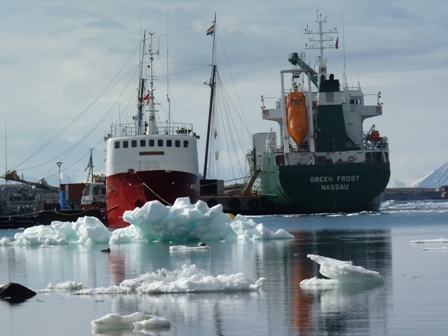




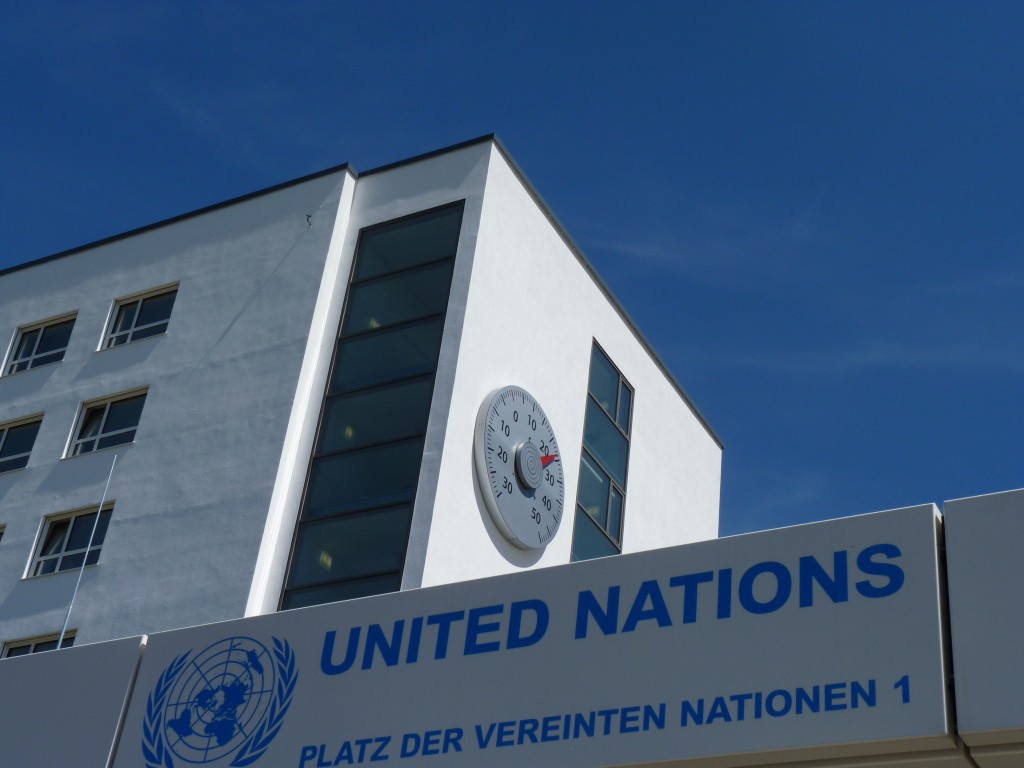
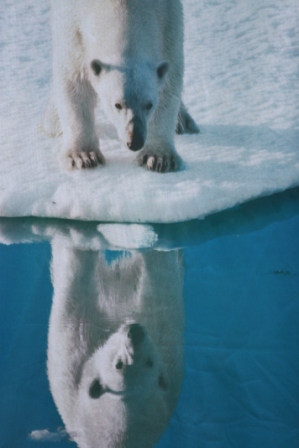

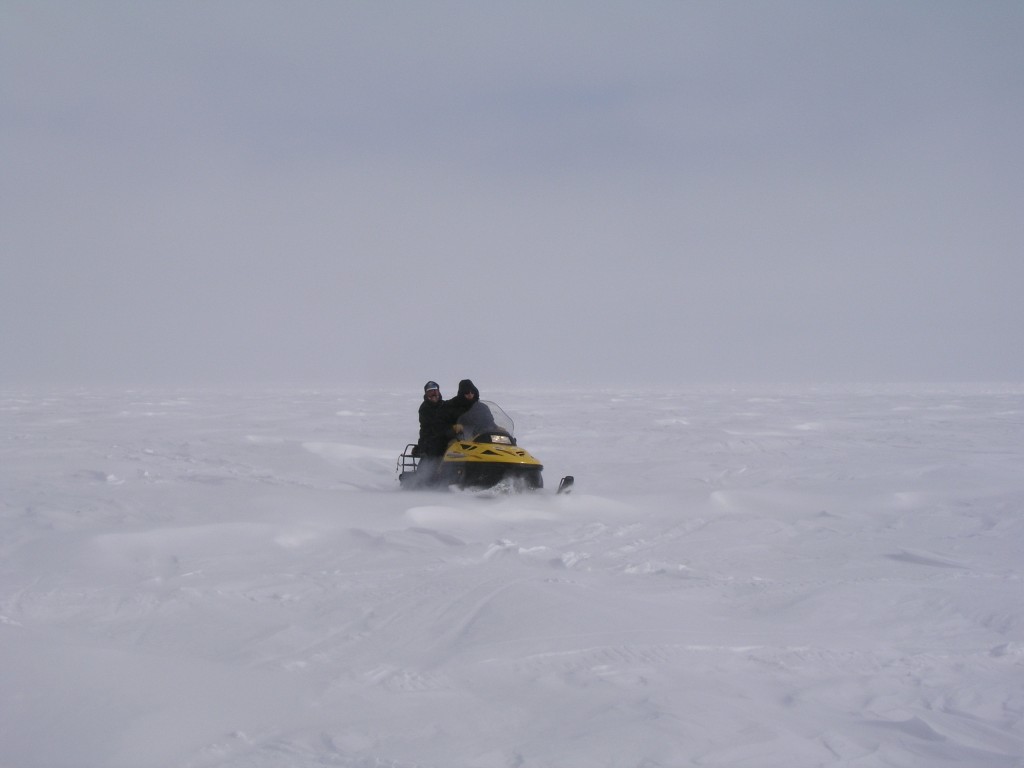

















Feedback